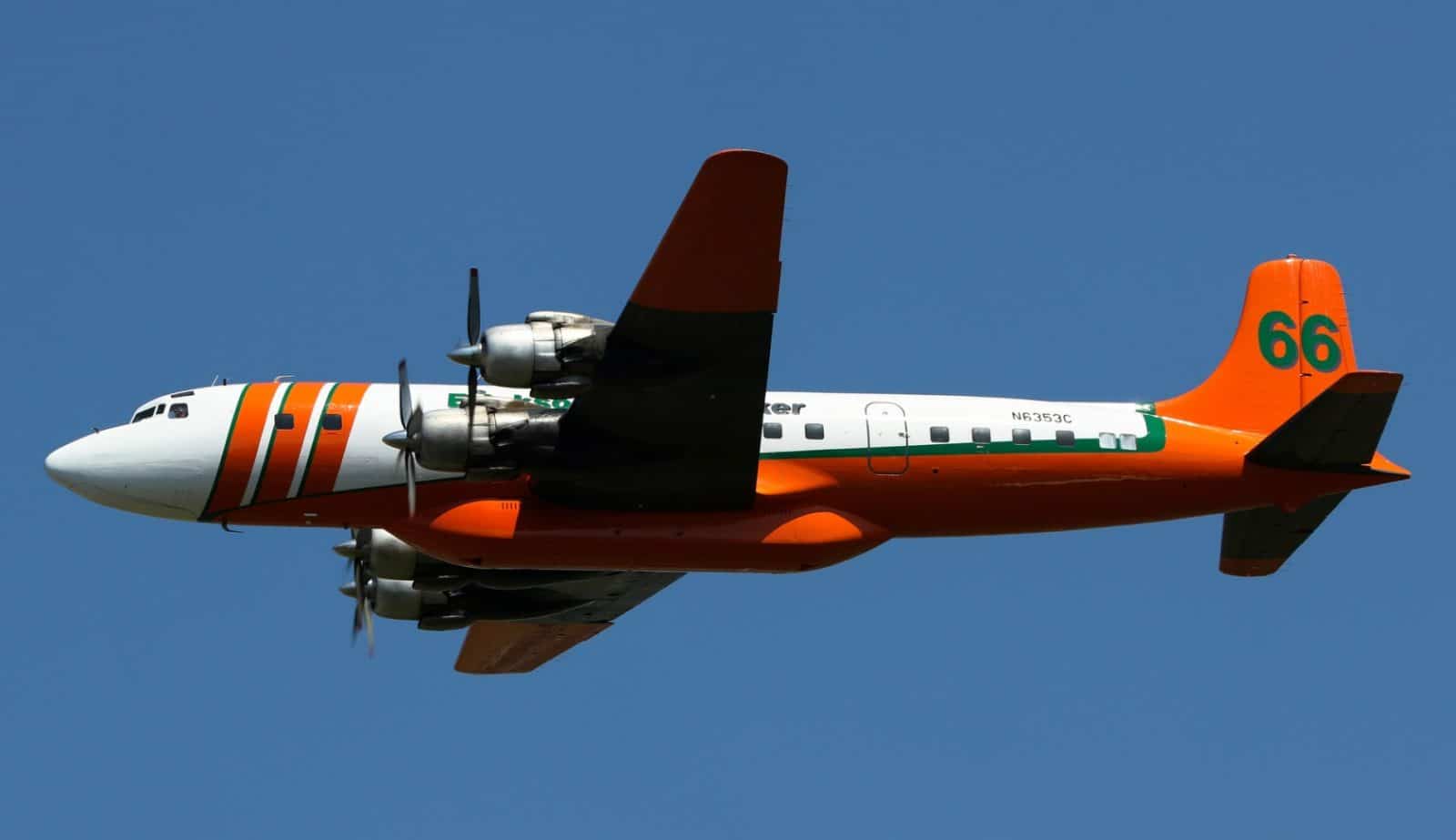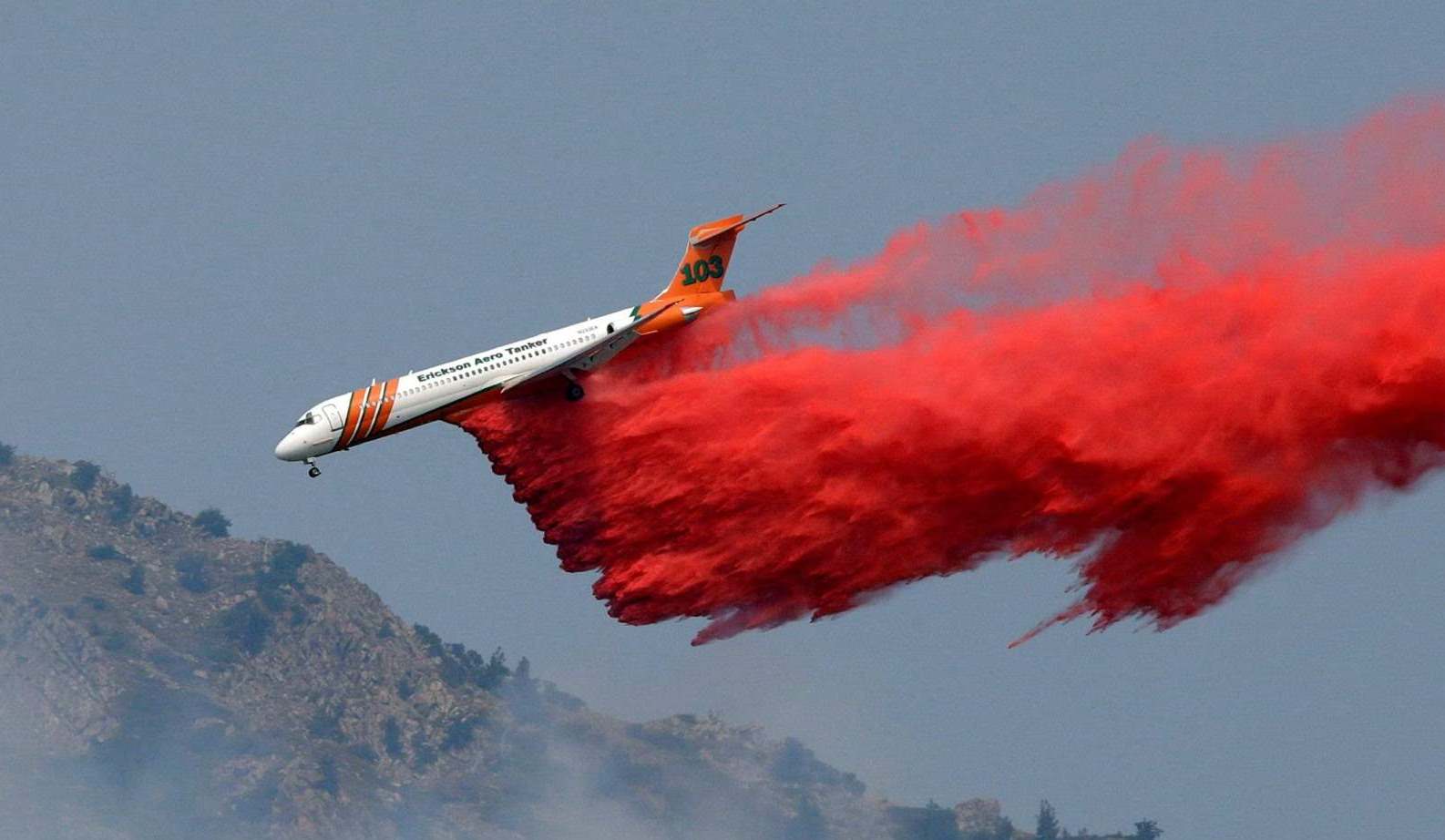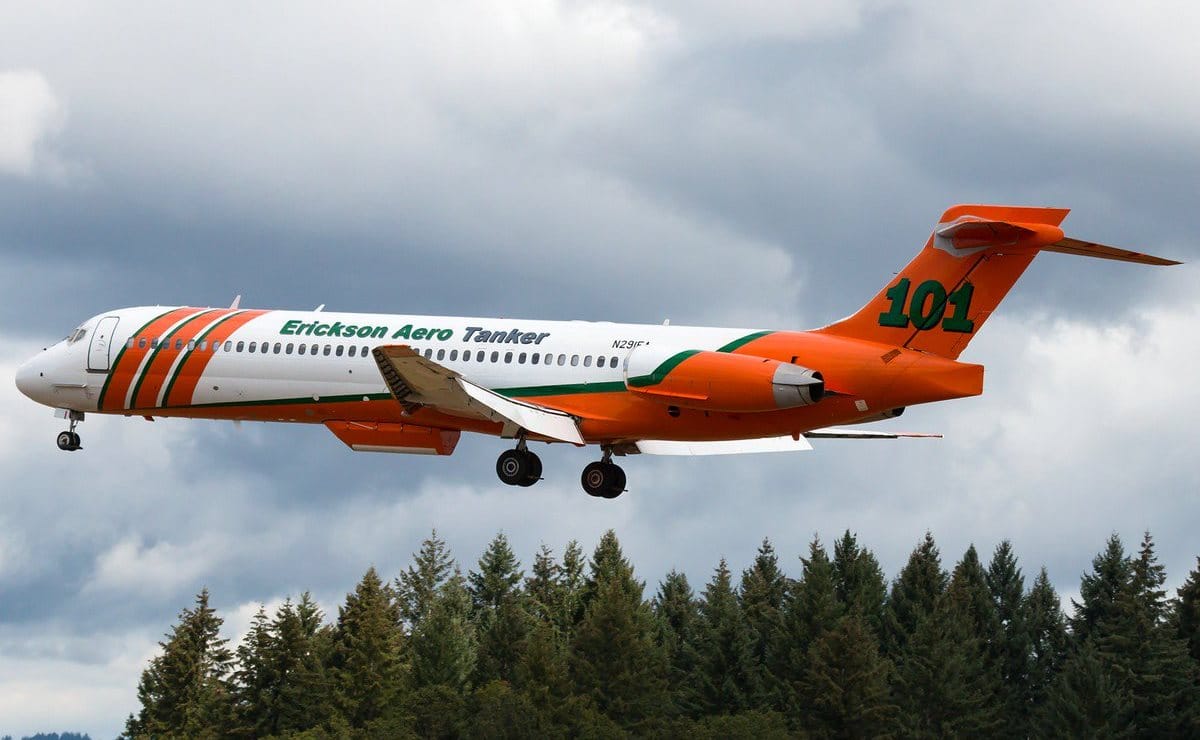Aircraft used to fight fire from the air have included old World War II bombers like the Boeing B-17 Flying Fortress, North American B-25 Mitchell, Douglas A-26 Invader, and others. Consolidated PBY Catalinas and the few huge Martin Mars flying boats have been pressed into service as tankers. Former Navy patrol aircraft like the Consolidated PB4Y-2 Privateer, Lockheed P-2 Neptune and P-3 Orion have been on the front lines. Airlifters like the Fairchild C-119 Flying Boxcar, the Lockheed C-130 Hercules, and old Douglas propliners like the DC-4, DC-6, and DC-7 have also been used as retardant delivery platforms. Veteran Grumman S-2 Trackers, some of them updated with turbine engines, have been or are in use. Even Grumman F7F Tigercats and TBF/TBM Avengers have gotten in on the action- among many more.

Airliners like the Boeing 747, Douglas DC-10, and Bae 146 are working the wildfires. One of the newer aerial tanker solutions is the Erickson Aero Tanker MD-87. The company already owns seven aircraft with five of them converted for tanker duty (tankers 101, 102, 103, 105, and 107) and hopes to build a fleet of ten tanker-configured MD-87s. Standard retardant capacity for the MD-87 tanker is 4,000 gallons. That’s a far cry from the 19,000-plus gallon capacity of the 747 Global Super Tanker, but the MD-87 is much less expensive to operate and can utilize more austere fields with shorter runways.

The MD-87 tanker’s capacity is 1,920 gallons more than the capacity of the Lockheed P-2 Neptune tankers and 1,000 gallons more than Bae-146 tankers. Because the MD-87’s tail-mounted twin Pratt & Whitney JT8D engines could be affected by retardant released from the standard opening in the belly of the aircraft, Erickson has added an external ventral tank which creates an additional four feet of separation between the released retardant flow and the engines.

Tanker drops with the gear down
One interesting aspect of the MD-87 tanker is under certain conditions, the aircraft is flown with the landing gear down during the retardant drop. This reduces airspeed while allowing higher engine RPMs, reducing lag on post-drop climb out- similar to a speed break. This is not unique to the MD-87 tankers though. Douglas DC-7s and some other large tanker-modified aircraft have done the same thing for many years. Occasionally only the main gear are extended with nose gear stowed. When pulling off or up after a retardant drop the pilots of these aircraft simply want as much performance available to them as possible. Here’s a video of a MD-87 dropping retardant uploaded to YouTube by wcolby.
[youtube id=”JelMI6jHlmg” width=”800″ height=”454″ position=”left”]


[…] sight of my backyard, which means we have been treated to a noisy air show of helicopters and MD-87s dumping water or fire retardant on the […]